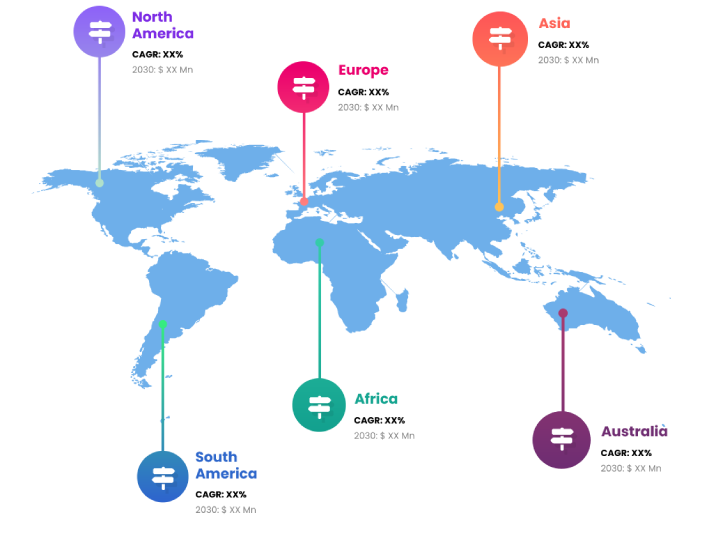
To hold a roof in place, builders utilize roof trusses, which are prefabricated structural frameworks of linked sections. Roof trusses can be created in a variety of forms to meet the unique requirements of each project, although triangles are the most common. Trusses for roofs can be constructed from a variety of materials, including wood, metal, concrete, or composites. In order to make a building or structure more resistant to the forces of nature and load, this product gives it strength, stability, and durability. Top and bottom chords, ties, struts, purlins, rafters, ridge line, eaves, panel points, roof covering, base plate, anchor plate, and anchor bolts are the main parts of a roof truss.
A thorough examination of the strategies, business methods, and market shares of the most notable players in the roof truss industry is provided by the research report. The whole study includes a detailed report on the influencing factors as well as data broken down by segment, region, nation, and market revenue. As far as we are aware, our research covers every angle of the ever-changing Roof Truss industry.
Trusses are a type of structural member that can support horizontal, vertical, or inclinational stresses; they are characterized by their triangle shape and joint framing. The components of a truss are the eye bars, channels, and angles. Supporting a roof, bridge, or other structure, it usually includes rafters, posts, and struts. They provide structural support for the roofs of many different types of buildings, including stadiums, movie theaters, train stations, airports, and homes. Roof trusses are known for their resourcefulness in building materials. Roof trusses are made up of discrete components that are lightweight. They are also more easier to carry and put together than other types of roof constructions. But trusses are more complicated and call for additional linked tools. But if more of the same trusses can be made, then there will be huge savings of scale.
Due to the many structural advantages, roof trusses are finding widespread use in the construction of both commercial and residential buildings. Regardless of the size or purpose of a structure, roof truss provides a versatile solution for sturdy and roomy roof construction. They are ideal for contemporary structures that value openness and adaptability due to their adaptable plan style. Roof trusses are experiencing rapid market expansion due to their extensive use in a wide range of residential and commercial building projects, as previously indicated. For example, a study by Oxford Economics estimates that worldwide building output would reach USD 15.2 trillion in 2031, up from an estimated USD 10.7 trillion in 2020. The increasing demand for roof truss is fueling the expansion of the product market, which is being driven by the rise in construction activities worldwide.
Prefabricated roof trusses necessitate the use of specialist machinery during installation. This is why it costs more than alternatives like metal or shingles for roofing. Not to mention how time-consuming and expensive it is to maintain roof trusses. Roof truss market growth is thus expected to be hindered by the aforementioned constraints, particularly in developing nations.
Trusses for roofs can be either prefabricated from wood or metal and then installed on-site. Compared to more conventional roof framing methods, this one is easier and takes less time to install. This has led to roof trusses becoming more common in the construction of low-cost homes due to their sustainability. In addition, roof trusses are long-lasting and sturdy, which means they can lessen the frequency of roof repairs and increase the lifespan of a roof. The improved insulation and ventilation provided by these roofs can also contribute to a building's increased energy efficiency. Over the projection period, the demand for roof trusses is predicted to rise in tandem with the desire for cheap and sustainable housing.
Over the next several years, there will be a growing need for more environmentally friendly and technologically advanced construction methods due to the increasing rate of urbanization around the world. The expansion of infrastructure and building and renovation projects has been a major factor in the recent meteoric rise of the roof truss market. Additional factors that have enhanced the truss industry's growth potential include a growing population, more per capita income, faster urbanization, industrialization, and greater economic growth. When broken down by type, the scissor roof truss segment is expanding at a faster rate than any other, while king post truss and queen post truss continue to dominate their respective markets. Due to its widespread availability and long history of use, king post truss had the largest proportion of the market.
In most construction projects, the king post is typically under tension and requires very durable and strong couplings with the tie beam. However, consumers often choose cheaper wooden or steel trusses because they are unaware of the new type of roof trusses. In its place, a metal rod—often wrought iron—replaces the roof truss, often called a king bolt truss or just the king post. By utilizing the post truss's straining beam as the tie-beam for an above king post truss, it is possible to combine the scissor and king post trusses. The term for these kinds of configurations is compound trusses.
Report Coverage
Global Roof Truss research report categorizes the market for global based on various segments and regions, forecasts revenue growth, and analyzes trends in each submarket. Global Roof Truss report analyses the key growth drivers, opportunities, and challenges influencing the global market. Recent market developments and Roof Truss competitive strategies such as expansion, product launch and development, partnership, merger, and acquisition have been included to draw the competitive landscape in the market. The report strategically identifies and profiles the key Roof Truss market players and analyses their core competencies in each global market sub-segments.
| REPORT ATTRIBUTES | DETAILS |
|---|---|
| Study Period | 2017-2031 |
| Base Year | 2023 |
| Forecast Period | 2023-2031 |
| Historical Period | 2017-2021 |
| Unit | Value (USD Billion) |
| Key Companies Profiled | ENDO TRUSS, Minera Roof Trusses, AAA Trusses and Windows, Donaldson Timber Engineering Ltd, Scotts of Timber, Stark Truss, Truss-Tech Limited, Nuneaton Roof Truss Limited, Wilson Roof Truss Ltd, Thomas Armstrong (Timber) Ltd, and Magtruss Ltd |
| Segments Covered | • By Product |
| Customization Scope | Free report customization (equivalent to up to 3 analyst working days) with purchase. Addition or alteration to country, regional & segment scope |
Key Points Covered in the Report
- Market Revenue of Roof Truss Market from 2021 to 2031.
- Market Forecast for Roof Truss Market from 2021 to 2031.
- Regional Market Share and Revenue from 2021 to 2031.
- Country Market share within region from 2021 to 2031.
- Key Type and Application Revenue and forecast.
- Company Market Share Analysis, Roof Truss competitive scenario, ranking, and detailed company
profiles. - Market driver, restraints, and detailed COVID-19 impact on Roof Truss
Market
Competitive Environment:
The research provides an accurate study of the major organisations and companies operating in the global Roof Truss market, along with a comparative evaluation based on their product portfolios, corporate summaries, geographic reach, business plans, Roof Truss market shares in specific segments, and SWOT analyses. A detailed analysis of the firms' recent news and developments, such as product development, inventions, joint ventures, partnerships, mergers and acquisitions, strategic alliances, and other activities, is also included in the study. This makes it possible to assess the level of market competition as a whole.
List of Major Market Participants
ENDO TRUSS, Minera Roof Trusses, AAA Trusses and Windows, Donaldson Timber Engineering Ltd, Scotts of Timber, Stark Truss, Truss-Tech Limited, Nuneaton Roof Truss Limited, Wilson Roof Truss Ltd, Thomas Armstrong (Timber) Ltd, and Magtruss Ltd
Primary Target Market
- Market Players of Roof Truss
- Investors
- End-users
- Government Authorities
- Consulting And Research Firm
- Venture capitalists
- Third-party knowledge providers
- Value-Added Resellers (VARs)
Market Segment:
This study forecasts global, regional, and country revenue from 2019 to 2031. INFINITIVE DATA EXPERT has segmented the global Roof Truss market based on the below-mentioned segments:
Global Roof Truss Market, By Type
King Post Truss
Queen Post Truss
Howe Truss
Quadrangular Truss
Scissor Truss
Pratt Truss
Others
Global Roof Truss market, By Application
Residential Buildings
Non-Residential Buildings
Global Roof Truss market, Regional Analysis
- Europe: Germany, Uk, France, Italy, Spain, Russia, Rest of Europe
- The Asia Pacific: China,Japan,India,South Korea,Australia,Rest of Asia Pacific
- South America: Brazil, Argentina, Rest of South America
- Middle East & Africa: UAE, Saudi Arabia, Qatar, South Africa, Rest of Middle East & Africa
You will get in-depth and extensive roof truss market market research and competitor analysis for your business to help you develop more profound insights into the roof truss market Market.
Through INFINITIVE Data Expert is a professional Market Research services, I will identify the roof truss market market size, demand & opportunities, growth rate, and target audience with a comprehensive analysis of your competitors.



